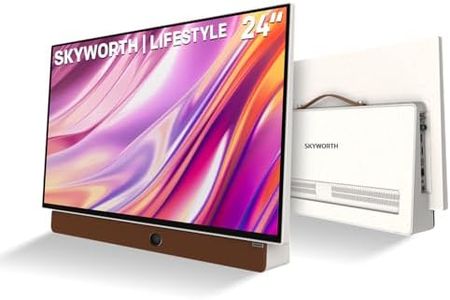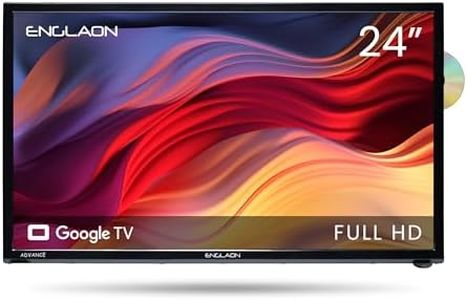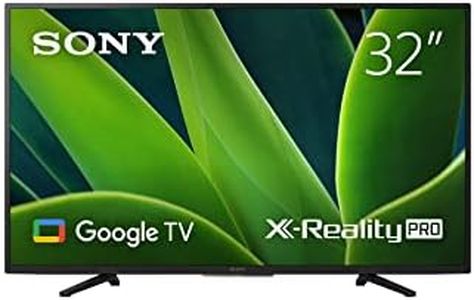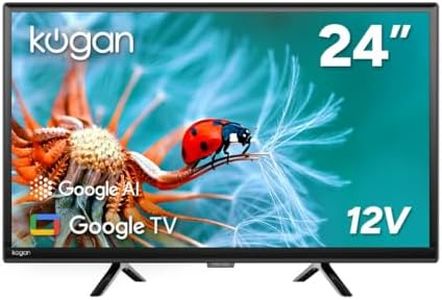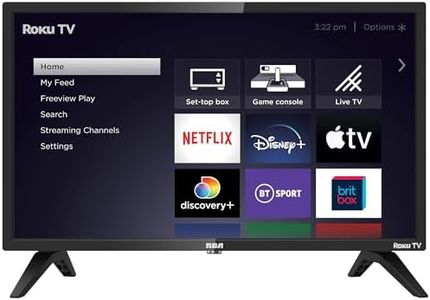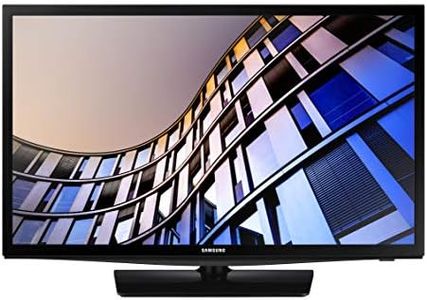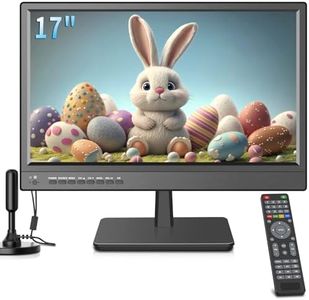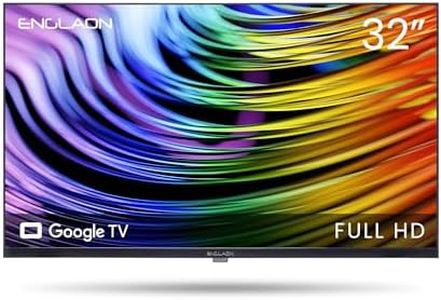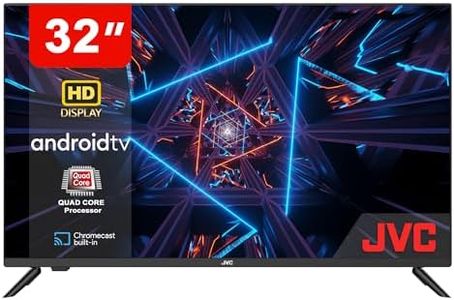We Use CookiesWe use cookies to enhance the security, performance,
functionality and for analytical and promotional activities. By continuing to browse this site you
are agreeing to our privacy policy
10 Best Small Smart TV For Kitchen
From leading brands and best sellers available on the web.Buying Guide for the Best Small Smart TV For Kitchen
Choosing a smart TV for your kitchen can make cooking and meal prep more enjoyable, giving you access to shows, recipes, and music. Kitchens often have limited space and special conditions like moisture, so picking the right TV means looking at size, placement, and ease of use. When shopping, it's important to focus on essential features rather than advanced specs that may not matter in a kitchen setting. Think about where you’ll place the TV, how you'll control it, and what you’ll most often watch.Screen SizeScreen size refers to the diagonal length of the TV's display, usually measured in inches. In a kitchen, where space is often limited, a smaller screen—typically in the range of 20 to 32 inches—is most practical. The right size depends on where you plan to place the TV and how far you'll be from it. For mounting under cabinets or on a small countertop, stick to the lower end of the range, while slightly larger sizes are fine if you have more wall space. Always measure your available space before choosing.
ResolutionResolution refers to the number of pixels that make up the picture on the screen, and it determines how clear and sharp the image looks. For small TVs in the kitchen, HD (720p) is generally enough since the screen is small and you’ll likely be watching from a short distance or side angles. Full HD (1080p) gives sharper images if you want a bit more clarity, but higher resolutions like 4K usually aren’t necessary or noticeable on compact screens.
Smart Features and AppsSmart features let your TV connect to the internet and run entertainment apps such as YouTube, Netflix, or recipe apps. The importance here lies in having easy access to your favorite content. Some smart TV systems are simple and user-friendly, while others offer more choices but can be complicated. If you just want basic streaming, a simple platform is best. Make sure the TV supports the apps and voice assistants you use most, as some systems may not offer all services.
Viewing AnglesViewing angle is about how well you can see the screen from the side, above, or below. In a kitchen, it's unlikely you'll always be sitting right in front of the TV; you might be moving around, cooking, or cleaning. A TV with good viewing angles means the picture stays clear and colorful even if you’re off to the side. Generally, IPS panels provide wider viewing angles compared to VA panels. If the TV will be placed higher or at an angle, prioritize models known for better off-center visibility.
Mounting OptionsMounting refers to how and where you can put your TV in the kitchen. Some TVs come with stands while others are best mounted on walls or under cabinets. A wall-mountable TV opens up more placement options, keeping counters clear and making the screen easier to see from around the room. Check that the TV supports the type of bracket you want and that you have the right space and tools. Pick based on your kitchen’s layout and where you want the TV visible and out of the way.
Ease of Cleaning and DurabilityKitchens can be steamy, greasy, and messy. A TV with a simple, smooth design is easier to wipe down. Some models have sealed edges or special coatings that resist moisture and dust. While you don’t need something built for extreme conditions, it’s smart to avoid TVs with lots of gaps or textured surfaces. If your kitchen gets especially humid, consider a unit with extra moisture protection. Choose a TV that you can easily keep clean and that will handle the kitchen environment.
Remote Control and Voice ControlRemote control is how you interact with your TV, and in a kitchen, your hands might be occupied. Some TVs offer voice control, letting you change channels, adjust volume, or search for content by speaking. This is especially handy if you’re cooking. Consider TVs with good, responsive remotes or those compatible with your preferred voice assistant. If voice commands aren’t important to you, a simple remote that’s easy to clean may be enough.
